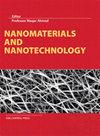含二十二碳六烯酸自纳米乳化口服给药系统的配方设计及药动学评价
IF 3.3
3区 材料科学
Q2 MATERIALS SCIENCE, MULTIDISCIPLINARY
引用次数: 7
摘要
二十二碳六烯酸是一种ω-3脂肪酸,与其他已知的长链ω-3-脂肪酸一起对包括高血压、心肌梗死、阿尔茨海默病和癌症在内的各种疾病具有保护作用。由于水溶性有限,生物利用度低,限制了其有效的治疗递送。已知自纳米乳化药物递送系统可增强生物利用率低的亲脂性生物活性/治疗化合物的全身吸收。本工作的目的是研究自发纳米乳化产生的自纳米乳化药物递送系统提高二十二碳六烯酸口服生物利用度的潜力。最初,通过测定组分与二十二碳六烯酸的混溶性和乳化性来筛选油、表面活性剂和助表面活性剂。使用Capryol 90、Tween 20和聚乙二醇200制备了含有二十二碳六烯酸的自纳米乳化药物递送系统,因为它们与二十二碳六油酸具有优异的混溶性和乳化性。发现含有二十二碳六烯酸的自纳米乳化药物递送系统的液滴尺寸、尺寸分布和ζ电位分别为111.5±4.2nm、0.269±0.05nm和−23.53±2.9mV。体外药物释放和离体吸收研究表明,与二十二碳六烯酸水性分散体相比,体外释放和肠道吸收更好。体内研究表明,与二十二碳六烯酸水性分散体相比,含有二十二碳六油酸的自纳米乳化药物递送系统的口服生物利用度显著增加(p<0.001)。这表明了自纳米乳化药物递送系统作为口服二十二碳六烯酸的有效单位剂型的潜力。本文章由计算机程序翻译,如有差异,请以英文原文为准。
Formulation design and pharmacokinetic evaluation of docosahexaenoic acid containing self-nanoemulsifying drug delivery system for oral administration
Docosahexaenoic acid is a omega-3-fatty acid which together with other long-chain omega-3-fatty acid known to have protective effect against various diseases including hypertension, myocardial infarction, Alzheimer disease, and cancers. Poor bioavailability owning to limited aqueous solubility limits its effective therapeutic delivery. Self-nanoemulsifying drug delivery systems are known to enhance the systemic absorption of poorly bioavailable lipophilic bioactive/therapeutics compounds. The purpose of this work was to investigate the potential of self-nanoemulsifying drug delivery systems produced by spontaneous nanoemulsification to enhance the oral bioavailability of docosahexaenoic acid. Initially, the screening of oil, surfactant, and cosurfactant was carried out by determining the miscibility and emulsifiability of the component with docosahexaenoic acid. Docosahexaenoic acid-containing self-nanoemulsifying drug delivery systems were prepared using Capryol 90, Tween 20, and polyethylene glycol 200 due to their excellent miscibility and emulsifiability with docosahexaenoic acid. Docosahexaenoic acid-containing self-nanoemulsifying drug delivery systems’ droplet size, size distribution, and zeta potential were found to be 111.5 ± 4.2 nm, 0.269 ± 0.05 nm, and −23.53 ± 2.9 mV, respectively. The in vitro drug release and ex vivo absorption studies showed better in vitro release and intestinal absorption as compared to docosahexaenoic acid aqueous dispersion. In vivo studies demonstrated a significant increase (p < 0.001) in the oral bioavailability of docosahexaenoic acid-containing self-nanoemulsifying drug delivery systems in comparison to a docosahexaenoic acid aqueous dispersion. This indicated the potential of self-nanoemulsifying drug delivery systems as an effective unit dosage form for the oral delivery of docosahexaenoic acid.
求助全文
通过发布文献求助,成功后即可免费获取论文全文。
去求助
来源期刊

Nanomaterials and Nanotechnology
NANOSCIENCE & NANOTECHNOLOGY-MATERIALS SCIENCE, MULTIDISCIPLINARY
CiteScore
7.20
自引率
21.60%
发文量
13
审稿时长
15 weeks
期刊介绍:
Nanomaterials and Nanotechnology is a JCR ranked, peer-reviewed open access journal addressed to a cross-disciplinary readership including scientists, researchers and professionals in both academia and industry with an interest in nanoscience and nanotechnology. The scope comprises (but is not limited to) the fundamental aspects and applications of nanoscience and nanotechnology
 求助内容:
求助内容: 应助结果提醒方式:
应助结果提醒方式:


